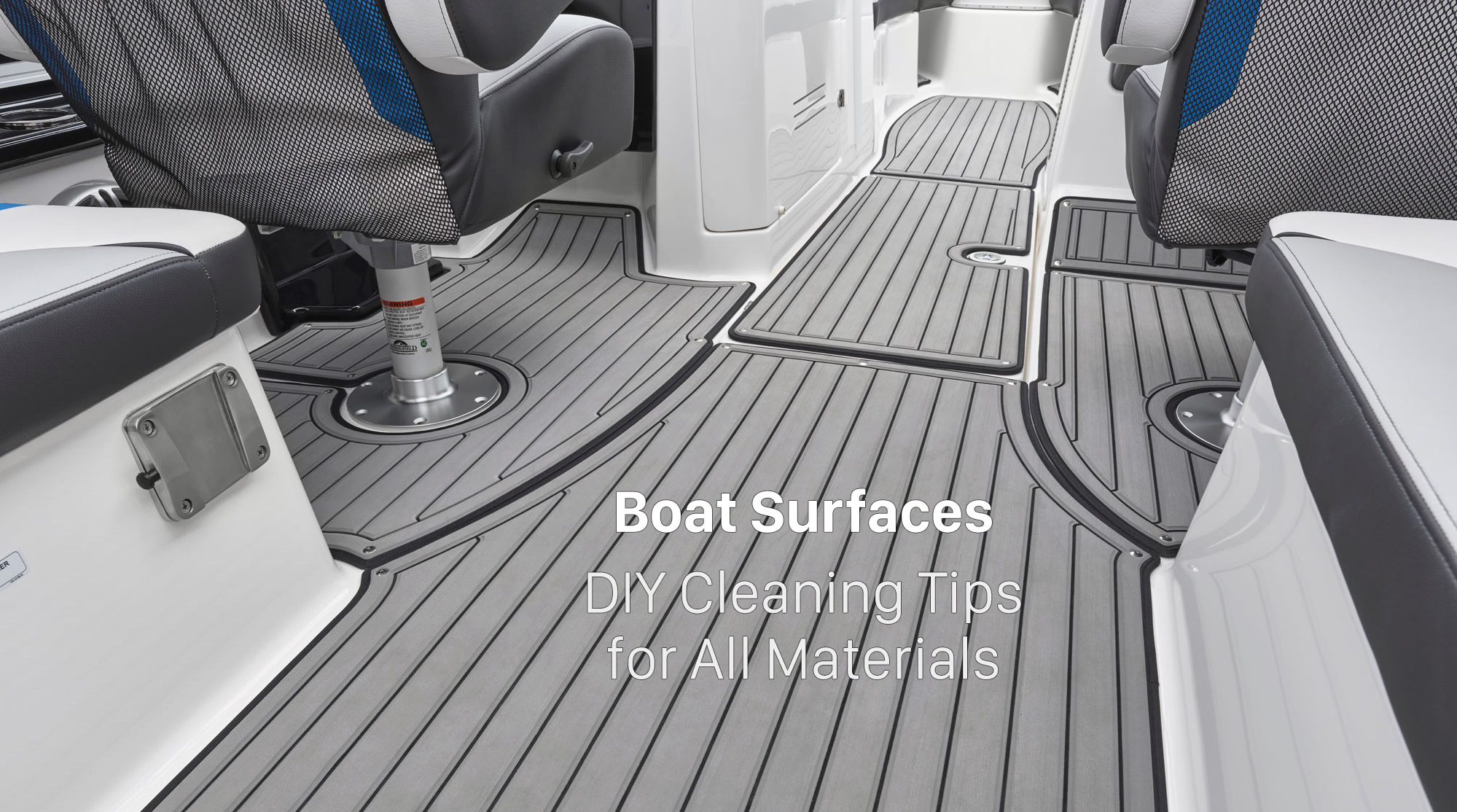
How to care for boat surfaces
DIY Tips for Every Surface
Boat maintenance is an ongoing process. The water environment can strip paint and varnish, and animal activity can leave messes that left untouched can permanently mar the surfaces of your boat. Here are some ways to keep all your boat surfaces shipshape year round.
Various Boat Surfaces and Their Care
Fiberglass: Fiberglass is like the exterior of a car and requires not much more than a good paint job, regular washing, and periodic coats of wax. Periodic top painting and an application of bottom paint every 1-5 years will keep your fiberglass functional and beautiful.
Aluminum: Aluminum requires not much more than an aluminum rated paint and regular washing to keep it looking good. The real risk with aluminum is wear due to galvanic corrosion. Boat zincs protect aluminum items only if attached correctly, so don’t attach other metals to aluminum, particularly under the waterline. Avoid electrical connections between fittings, graphite lubricants or the use of automotive battery chargers. Wash with freshwater after every run to avoid salt buildup.
Other Metals: (Brass, chrome, stainless steel etc) Consider the marine habitat and ensure you do any corrosive polishing or cleaning with the item relocated away from the water. Use proper placement of zincs to protect against galvanic corrosion, and if you do find signs of early corrosion, invest in an anti-fouling paint designed for submerged metal parts on boats.
Glass: Glass is one of the easiest surfaces to clean. Use either a marine rated glass cleaner or simply saltwater and newspaper for a high-polish shine. Investing in a squeegee will save on paper towels in the long term.
Wood: The key to beautiful wood is to keep it well-sealed. Even hard wood like teak is susceptible to water soaking into untreated porous areas creating permanent damage. Regularly replacing varnish, oils and paint will keep your boat safe from salt water, rain and UV rays.
Isenglass: Ammonia based cleaners will scar isinglass so make sure you use water and mild dish soap to keep your canvas windows looking shiny and new.
Canvas: One of the quickest items to wear on a boat is canvas. Like every part of your boat, a freshwater wash-down after every trip will help as well as an annual application of rainproofing and UV protecting spray. If mold or mildew appears, don’t use bleach-based products as they are not marine safe and will discolour the material. Instead, scrub baking soda into the mildewed areas, let sit for an hour followed by a good wash with marine canvas soap.
Carpet and Upholstery: Boat upholstery can absorb and trap liquids so it’s important to keep the area as dehumidified as possible. Wash all linens at the beginning of each boating season and use a steam cleaner on other surfaces. Steam cleaners are great for cleaning foam inside boat cushions, boat mattresses, and narrow cracks that can’t be reached otherwise, like under refrigerators and between grooved flooring.
Boats are one of the best methods of getting away from it all, and keeping every surface of your boat maintained you protect the beauty and structural integrity of your vessel for years to come.
